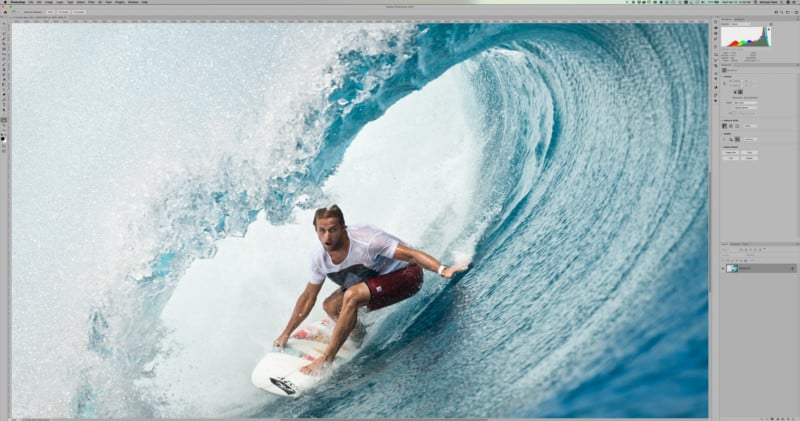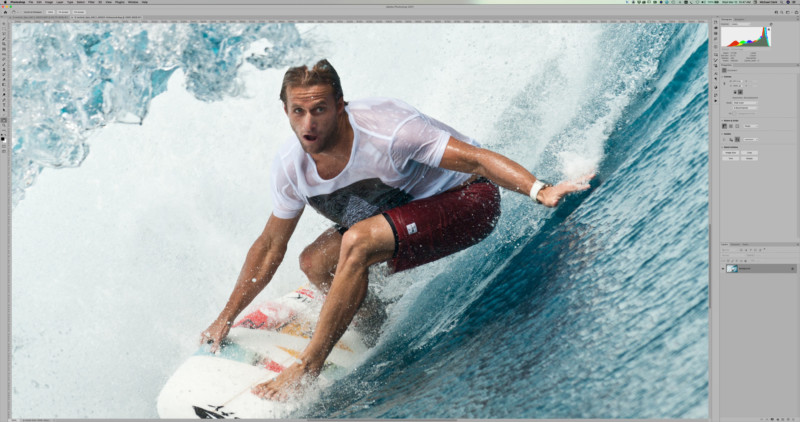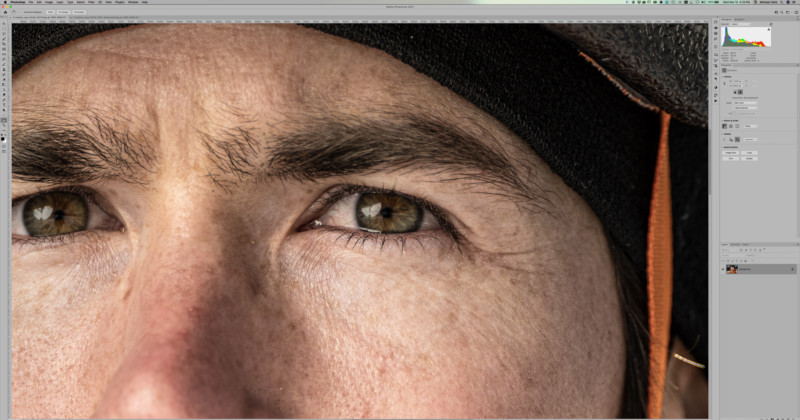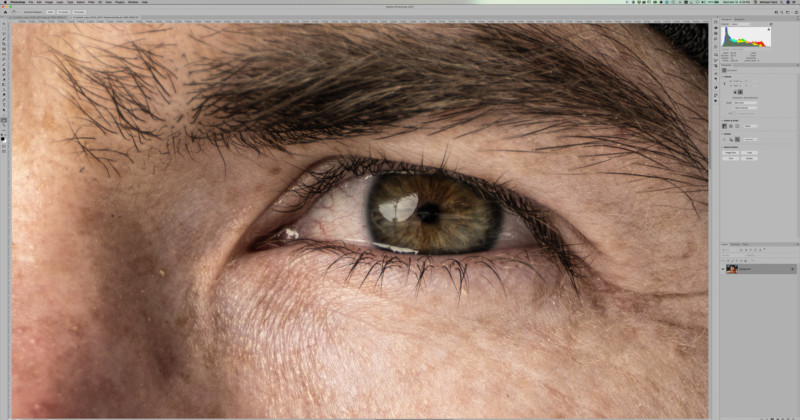![]()
[ad_1]
![]()
Adobe has just released its latest software updates via the Creative Cloud and among those updates is a new feature in Adobe Camera Raw (ACR) called “Super Resolution”. You can mark this day as a major change in the photo industry.
I have seen a few reports on this subject from PetaPixel and Fstoppers, but other than that the ramifications of this new feature in ACR haven’t been widely promoted from what I can see. ACR’s new super-resolution feature essentially magnifies the image by a factor of four using machine learning, which is artificial intelligence (AI).
The PetaPixel Article on this new feature quoted Eric Chan from Adobe:
The super resolution builds on a technology launched by Adobe two years ago called Enhance Details, which uses machine learning to interpolate RAW files with a high degree of fidelity, resulting in images with crisp detail and fewer artifacts. The term “super resolution” refers to the process of improving the quality of a photo by increasing its apparent resolution, ”says Chan. “Enlarging a photo often produces blurry detail, but super resolution has one trump card up its sleeve: an advanced machine learning model trained on millions of photos. Backed by this extensive training package, Super Resolution can intelligently magnify photos while maintaining crisp edges and preserving important details.
What does this mean practically? Well I immediately tested this and was quite shocked with the results. While it might be hard to make out in the screenshot below, I took the surf image below, which was captured ten years ago with a Nikon D700 – a 12MP camera – and I ran the Super Resolution tool on it and the end result is a 48.2MP Image that appears to be just as crisp (if not sharper) as the original image file. This means that I can now print this old 12MP image at significantly larger sizes than I could before.
![]()
![]()
It also means anyone with a lower resolution camera i.e. the current crop of 24MP cameras can now produce huge image files for prints or any other use that requires a higher resolution image file. . In the three or four images I went through with this new Photoshop feature, I found the results to be incredibly good.
Let’s see how it works. First of all, it works with any image file, be it a raw image file, a TIFF, or a JPEG. You will need to open the image file in Adobe Camera Raw through Photoshop or Adobe Bridge as shown below. To access the Super Resolution feature, right click on the image and choose “Enhance” as shown below.
A dialog window will appear for you to see what the image will look like and you can also switch between the original image and the new improved version. The dialog box will give you an estimate of how long it will take to create the new enhanced image, which will appear as a separate image file. Once you’re ready, just click the Upgrade button in the lower right corner. ACR immediately starts working in the background to create the new image file, and it eventually appears right next to the original file you selected, regardless of where it is stored.
![]()
In my testing, as shown below, it took this old 12MP image from 4256 × 2832 pixels to 8512 × 5664 pixels. The screenshots below show this magnification. The top image is the lower resolution (original) version and the bottom image is the one that has gone through the super resolution process. The high resolution image is absolutely amazing. And at 48MP, I could easily blast that up to a 40 × 60 inch print, as with any image captured using my Nikon D850 45MP.


Once I enlarged the image using the Super Resolution feature, I zoomed in on the resulting image and was very impressed. The image looked just as crisp (if not a bit sharper) as the original image file, but of course it’s massively larger (in terms of resolution and file size). Kudos to the folks at Adobe for creating a truly revolutionary addition to Photoshop. I have tried some of the options in Topaz AI software, like Topaz Gigapixel AI, but haven’t seen it work as well.
What does that mean? For starters, it means that AI technology will have a huge impact on photography. In the future, the software we use to work on our images (and improve them) could in some cases have a greater effect on the final images than the camera used to capture the image.
To a certain extent, this new Photoshop tool significantly evens the playing field, regardless of which camera you are working with. Suddenly my Nikon Z6 and Fujifilm X-Pro3 (24MP and 26MP cameras respectively) are able to produce stunning large-size prints in a way that just wasn’t possible before.
What about high resolution cameras, you ask? Where do they end with all of this? The new Super Resolution tool will allow scaling to any frame as long as the resulting “enhanced” image file is less than 65,000 pixels on the long side and less than 500 MP in total. This means I can boost 102MP images from my Fujifilm GFX 100 and GFX 100S cameras and output crazy 400MP image files from a single image. It goes into the absurd, but it also opens doors to huge crazy impressions.
The reality is that this feature is a huge plus for owners of lower resolution (12MP to 16MP) and even medium resolution (24MP) cameras. Higher resolution cameras will always produce better image quality, but now we have the option of making large prints from relatively low resolution image files.
Improve a photo to 376 megapixels
After discussing this new feature with photographer friends, I played around with images from different cameras to see how it varies. I went through some images from my Nikon Z6 and also from my Fujifilm GFX 100. With the image from the GFX 100, the Super Resolution feature brought up a 376MP image file which was almost identical to the original image file, just four times larger. My jaw hit the ground when I zoomed in to 100% and compared it to the original! You can see both the original and enhanced images below. There is no way to pass 100% image size here, as I have no control over the viewer’s screen resolution, but regardless, they both look very clear.


From what I can tell, the Super Resolution tool seems to do an even better job with higher resolution cameras and especially with cameras that don’t have an anti-aliasing filter in front of the sensor. My Nikon Z6 images enhanced with this tool are still impressive but not as stunning as the example above. The Z6 has a very powerful anti-aliasing filter, essentially a filter that slightly blurs the image to reduce digital artifacts. Additionally, it seems that the amount of sharpening or noise reduction applied to the image is also magnified, so playing with the way the image is worked can have a significant effect on the quality of the final image. I’ll have to do some more testing.
If you’ve come this far and still read this pixel-peeping madness, then you might have realized that this could be the best upgrade of any camera. This is definitely one of the most amazing features Adobe has ever released in Photoshop.
This is just the start of the AI revolution. It also shows very clearly that many of the advancements in image quality will come from the software side of the equation, as we start to see cameras with incredible specs that could be difficult to improve significantly in the years to come. I am very excited about this new option in Photoshop because it will allow me to come up with much larger prints than I have been able to create before – and it will be stunning.
About the Author: Michael Clark is an international outdoor photographer specializing in adventure sports, travel and landscape photography. The opinions expressed in this article are solely those of the author. Clark contributes to National Geographic, National Geographic Adventure, Sports Illustrated, Outside, Men’s Journal, Backpacker, Outdoor Photographer, Digital Photo Pro, Climbing, Alpinist, Rock and Ice, Bike Magazine, and The New York Times, among others. You can find more of Clark’s work on his website, Facebook, Twitterand Instagram. This article was also published here.
[ad_2]
Source link